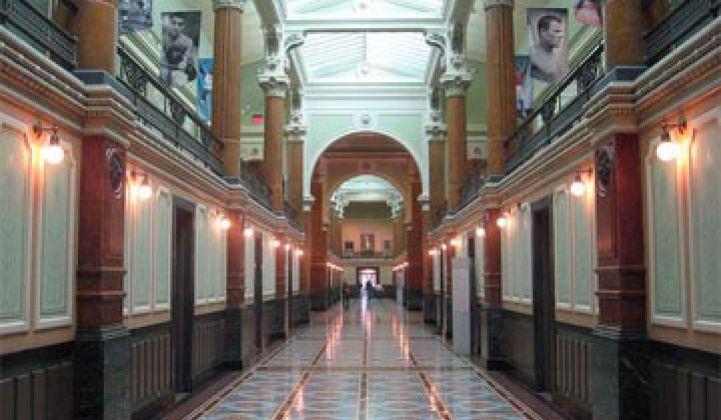The Pilot Program aims to promote green technology innovation and investment by cutting pendency -- the often-lengthy interval between patent filing and issuance. According to the USPTO, the Pilot Program’s expedited review process should trim the current 40-month average pendency by a full year, potentially speeding the financing, development, and commercial deployment of new green technologies. Petitioning to enter the program is straightforward and requires no fee.
Despite the program’s clear appeal, the public response has been surprisingly muted. As of late September, the program’s capacity still far exceeded the total petitions received. ThePilot Program was facing a submission deadline of December 8. But the USPTO just extended it to December 31, 2011. (Editor's Note: the extension came as we were in the publishing process, so we've updated the story.) The slow petition rate, though disappointing for program administrators, has preserved a remarkable opportunity for those yet to apply. Still, eligible green tech patent applicants should petition now to realize the significant benefits of expedited review.
Eligibility Requirements and Petitioning Procedures
The USPTO has established eligibility and procedural requirements for enrolling in the Pilot Program. First, the program initially limited eligibility to patent applications originally filed before December 8, 2009, but now goes a little over a year longer. Thus, perhaps counterintuitively for a program meant to encourage inventive behavior, only applications already on file when the Pilot Program began are eligible for expedited review. Second, applications must disclose an invention that materially (1) enhances environmental quality, (2) contributes to discovery or development of renewable energy resources, (3) contributes to energy efficiency/conservation, or (4) contributes to reducing greenhouse gas emissions.
Applicants that meet these eligibility criteria may petition the USPTO to enter the Pilot Program. The petition must be filed before the first office action and must state which of the four accepted subject-matter categories applies. Most applicants should also submit a statement signed by the applicant, assignee, or prosecuting attorney/agent explaining how the invention meets the materiality standard for advancing the stated technological objective.
The Pilot Program offers substantial advantages over other mechanisms available for seeking accelerated review. For example, most such requests incur a $130 petition fee, but the Pilot Program waives this requirement. In addition, the Pilot Program eliminates the usual requirement that applicants perform a pre-examination search and submit a detailed discussion of patentability in view of the resulting references. Overall, the Pilot Program offers a remarkably easy, safe, and inexpensive mechanism for saving prosecution time at the patent office.
Full details and instructions are available in the USPTO’s original and supplemental notices announcing the Pilot Program.
Sluggish Response
The Pilot Program launched on December 8, 2009, limiting participation to the first 3,000 qualified patent applications. But after nearly ten months, according to the USPTO’s September 23 statistics, only 1,530 petitions were filed and a mere 735 had been granted. The lukewarm response to the Pilot Program probably stems from a combination of factors.
As described in a previous post, the patent office initially restricted eligibility to a rigid set of technology classifications, likely excluding many otherwise well-suited green tech inventions. But the USPTO removed the class restrictions on May 21, and participation still has not reached expected levels. (Note: Applicants previously denied entry due to the classification requirement must file a new petition for reconsideration under the relaxed rule.)
Other factors may continue to inhibit participation. For example, the program restricts eligibility to a relatively narrow cohort of applications that were filed before December 8, 2009 but have yet to generate an office action. These rules not only constricted the eligible applicant pool, but also probably dampened enthusiasm even among those remaining because, for many, participation may have required changes to settled plans made without accounting for the later-introduced Pilot Program. Moreover, anecdotal evidence suggests that the Pilot Program may have simply suffered from inadequate publicity. It seems that many innovators in green technology fields even now remain unaware of the program.
Final Remarks
The Pilot Program for Green Technologies presents a tremendous opportunity for qualified applicants -- a simple, no-cost means for expediting patent decisions at the USPTO. These time savings not only translate into a longer effective term for any issued patent, but also allow inventors to move more swiftly with fundraising efforts and business decisions, potentially accelerating both product launches and eventual investment returns. The Pilot Program ends soon, however, so eligible green technology inventors should petition immediately to ensure access to its benefits.
The patent office appears to be considering whether to extend or even expand the program -- check back for updates -- but for those with existing, eligible green tech patent applications, the time to act is now.
***
Andrew Dufresne is an IP attorney.



